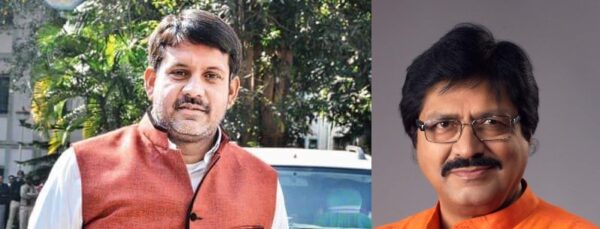
SWAMI DIVYA GYAN

In the political landscape of Jharkhand, two assembly constituencies—Sarath and Bhawnathpur—are poised for intense electoral contests. What makes these constituencies stand out is the rare direct rivalry between forward caste candidates, a significant dynamic in a state where tribal and backward caste politics often dominate. The upcoming elections in these constituencies bring together not just political parties but also caste-based rivalries and internal competition, creating a complex electoral environment. Chief Minister Hemant Soren’s statement that the sitting MLAs will not return has further heightened the stakes, making these races especially critical.
Sarath: Bhumihar Contest and Randhir Singh’s Challenge
In Sarath, the electoral battle centres around the Bhumihar community. The sitting MLA, Randhir Singh from the BJP, faces a tough challenge from Uday Singh, alias Chunna Singh, who is expected to contest on a Jharkhand Mukti Morcha (JMM) ticket. Both candidates belong to the influential Bhumihar caste, making the contest for control over the 15000 to 20000 Bhumihar votes crucial to determining the outcome of this election.
Uday Singh’s candidacy is expected to draw support from the Bhumihar community and tribal and Muslim voters, adding complexity to the political equation. Internal tensions within his party further complicate Randhir Singh’s position. A past rift with prominent BJP leader Nishikant Dubey has created uncertainty, with speculation that Dubey may extend support to Uday Singh, which could further challenge Randhir Singh’s hold.
However, Randhir Singh still enjoys strong support among the Backward Classes and at the grassroots level. Key figures like Chitra Kolwari Trade Union leaders and AJSU Party’s Arun Mahto back him, which could strengthen his position. Despite this, with the Mahagathbandhan (Grand Alliance) likely to rally behind Uday Singh, the contest in Sarath remains a critical test for all involved, particularly with the Bhumihar vote split between the two key candidates.

Bhawnathpur: Rajput Rivalries and Bhanu Pratap Shahi’s Uncertainty
In Bhawnathpur, a similar scenario is unfolding with the Rajput community at the heart of the contest. The sitting MLA, Bhanu Pratap Shahi, faces stiff competition from Rajput leader Anant Pratap Deo, who, in combination with BSP’s Sogra Bibi, commands significant political influence. In the last election, the combined vote count of Sogra Bibi and Anant Pratap Deo exceeded Bhanu Pratap’s by over 13,000 votes. If these two candidates unite in the upcoming election, it could severely challenge Shahi’s re-election bid.
Apart from the external challenge, Bhanu Pratap Shahi also faces internal competition. Raghuraj Pandey, a former district president of the BJP, with deep roots in the party’s ideological wing, is emerging as a strong contender for the BJP ticket. His involvement with the Akhil Bharatiya Vidyarthi Parishad (ABVP) and BJP Yuva Morcha has made him a significant player in the local political scene.
Additionally, Pradeep Chaubey, a former Rashtriya Swayamsevak Sangh (RSS) member, has also entered the fray and built a strong political identity. If Chaubey receives support from the RSS, it could add another dimension to Bhanu Pratap’s political challenge. Furthermore, Shahi’s Naujawan Sangharsh Morcha, which is managed by his wife and has not fully merged with the BJP, has caused some dissatisfaction within party ranks, potentially weakening his position.
Hemant Soren’s prediction: High stakes and intense rivalries
Chief Minister Hemant Soren’s declaration that Randhir Singh and Bhanu Pratap Shahi will not return to the assembly has raised the stakes for these two constituencies. The Soren government is reportedly ready to lend strong support to opposition candidates, making the contest even more intense.
For both Sarath and Bhawnathpur, the election is not only a battle between political parties but also a contest shaped by forward caste rivalries and internal dynamics. The Bhumihar versus Bhumihar contest in Sarath and the Rajput versus Rajput rivalry in Bhawnathpur are significant in determining the direction of the elections in these regions.
Conclusion: Navigating complex political terrain
The political landscape in Sarath and Bhawnathpur is marked by caste rivalries, internal competition, and strategic alliances. In both constituencies, forward caste candidates are vying for dominance, making the elections more unpredictable. Randhir Singh and Bhanu Pratap Shahi, the sitting MLAs, are navigating an environment filled with both external opposition and internal challenges. The Mahagathbandhan’s ability to consolidate opposition votes and the role of key caste dynamics will be critical in shaping the outcome.
Ultimately, the Sarath and Bhawnathpur contests will serve as a test of political strategy, caste influence, and internal party coherence in Jharkhand’s evolving electoral landscape.


